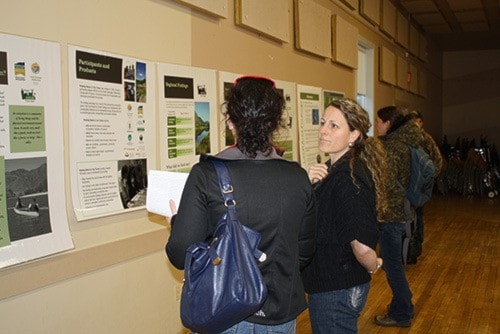The regional district presented its biodiversity strategy to members of the Lower Similkameen community at a public meeting held at Victory Hall, Wednesday, March 6.
Bryn White, Program Manager for the South Okanagan Similkameen Conservation Program, along with RDOS Planner Malcolm MacNaughton, presented the findings of their strategy, “Keeping Nature in Our Future” in two separate presentations Wednesday afternoon and evening.
Keeping Nature in Our Future is the result of a partnership between the regional district and the Okangan Similkameen Conservation Program, initiated as a result of biodiversity conservation goals set out in the sub regional growth strategy.
The strategy made the following observations about Keremeos and Areas “B” and “G”:
- Roughly 14 per cent of Keremeos land base contains ecosystems that are ranked high or very high in importance of biodiversity.
- Three per cent of those ecosystems are protected through open space of conservation lands.
- Only sensitive ecosystems adjacent to watercourses are included in Watercourse Development Permit areas. Other sensitive ecosystems are not within permit areas.
The strategy also pointed out examples of challenges faced by Keremeos as well as opportunities for biodiversity conservation within the village.
White pointed out that between 70 and 79 per cent of the electoral areas land bases in the Lower Similkameen had high or very high rankings for biodiversity importance, noting also that with a lack of zoning bylaws or an Official Community Plan, limited options for biodiversity protection was currently available. However, this also presented the two areas with opportunities to establish bylaws that considered the environmment from the outset, without having to make changes to existing historic zoning.
Both White and MacNaughton encouraged public participation during the presentations, providing many opportunities for residents to provide both written and verbal feedback, repeatedly requesting public input that could be taken into account before the RDOS and SOSCP decide on future priorities and the next steps for implementing the plan.
